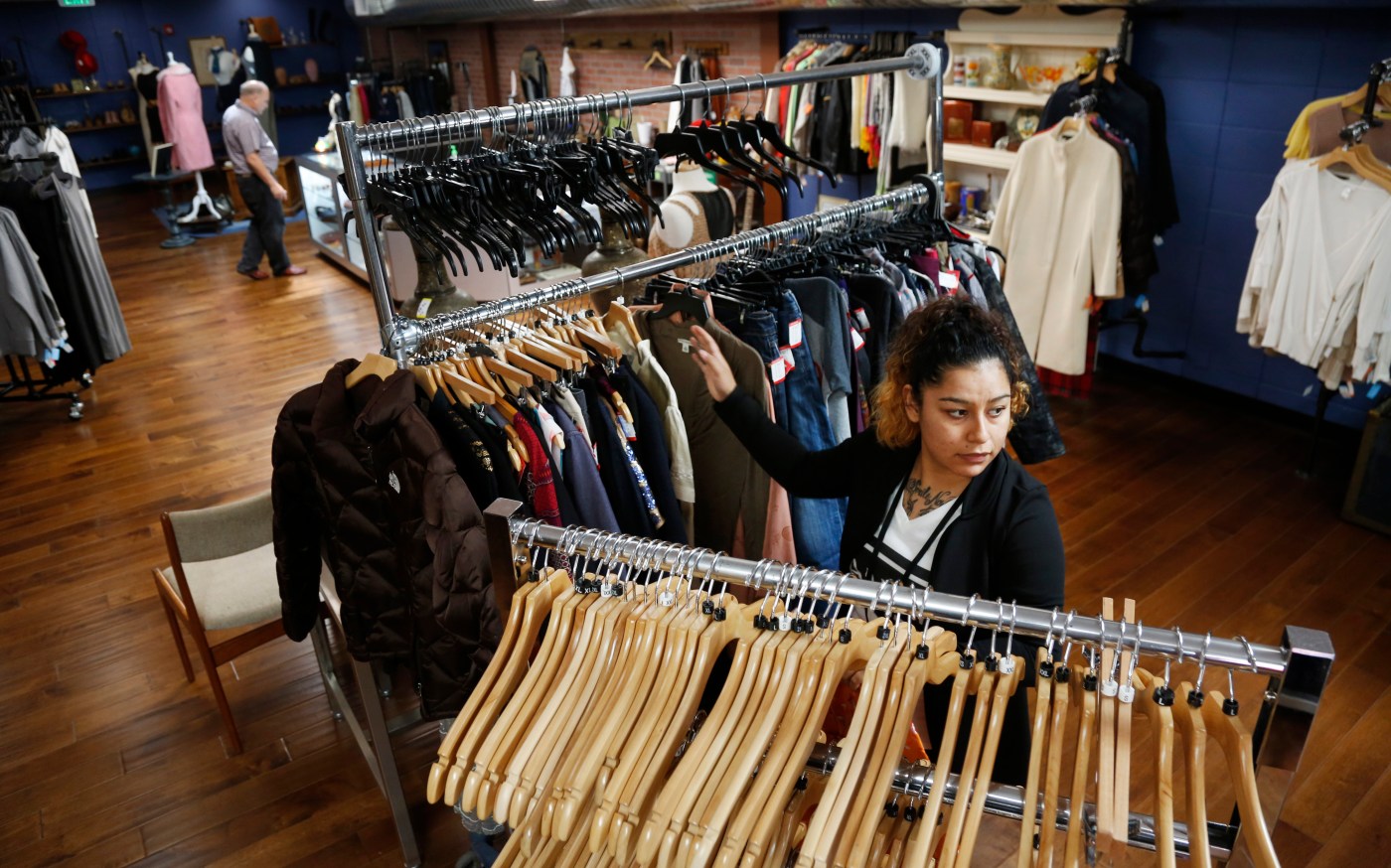
Is your closet full of old clothes? A new California law will require the fashion industry to take them back for free
Old clothes piling up? Wardrobe feeling a little out of date? It happens to everyone. But what to do with those unwanted shirts, pants, dresses and shoes?
California has a new answer.
On Saturday, Gov. Gavin Newsom signed a bill into law that requires companies that make clothing, footwear and textiles, including drapes, towels and bedding, to set up the nation’s first mandatory take-back program for unwanted clothes.
The goal of the bill, SB 707, is to reduce the millions of tons of unwanted clothes that end up in landfills across the state. Some are donated to thrift stores, but when thrift stores can’t resell them, they often re-sell the aging garments to other companies that ship them in bulk to developing nations, such as Ghana and Chile, where they are piled in mountains as high as 50 feet in deserts and along rivers, creating massive garbage problems.
“Too many of these garments are destined for a landfill or an incinerator,” said Fiona Hines, a legislative advocate with the California Public Interest Research Group, a non-profit consumer advocacy group in Sacramento.
“We are hopeful this nation-leading law will reduce clothing waste,” she added Sunday, “and lead us toward a future where we produce quality clothes that we can repair and reuse longer, and recycle when they reach their end of life.”
Under the new law, companies that make clothing and other textiles sold in California will be required to create a new non-profit organization by 2026 that would set up hundreds of collection sites at thrift stores, begin mail-back programs and take other steps in all of California’s 58 counties to take back and recycle their products by 2030.
“By 2030, convenient drop-off locations for used textiles across the state will provide everyone with a free and simple way to be part of the solution” said State Sen. Josh Newman, D-Fullerton, who wrote the bill, on Sunday. “California is again at the forefront of innovation.”
The problem is big. In 2021, roughly 1.2 million tons of clothes and textiles were disposed of in California, according to the California Department of Resources Recycling and Recovery, known as CalRecycle. While 95% are reusable or recyclable, only 15% currently are.
The accumulation of clothing waste is being made worse by “fast fashion,” a trend in which clothing companies make low-cost clothes intended to be worn only a few times as fashions shift.
The bill is the latest in a trend of California lawmakers requiring companies that make difficult-to-dispose-of products to take responsibility for recycling and reusing them, rather than leaving the cost and challenge up to local city and county governments.
One example: Under state law since 2018, consumers are charged $10.50 when they buy a new mattress in California. That money helps fund an industry-led program, the Mattress Recycling Council, that has opened 240 collection sites and now recycles 85% of old mattresses in the state.
Similar “extended producer responsibility” programs with paint and carpet have been put in place in recent years. The idea is to shift the burden away from consumers and government — which have to pay to expand and build landfills — to industry, which profits from selling the products in the first place
The bill was supported by environmental groups, including the Sierra Club, Californians Against Waste and the California Product Stewardship Council. It also was supported by Goodwill. The new non-profit group the clothing industry will be required to set up likely will pay Goodwill and other thrift stores for used clothing the thrift stores can’t sell. It also might pay thrift stores to set up drop-off locations at their stores.
France, center of the world’s fashion industry, already has a mandatory clothing recycling program. Other states around the U.S. are watching California to see if this one will work.
Industry groups at first opposed the bill, led by the California Chamber of Commerce and the American Apparel and Footwear Association, which represents more than 300 large clothing companies. After negotiating some changes with Newman, including allowing the industry group to do an assessment and work with CalRecycle to set recycling targets, they shifted to neutral.
Related Articles
Gov. Gavin Newsom signs law ending “paper or plastic?” at grocery store checkouts
Gen Z: Will they finally solve the plastic crisis?
Has a California lab discovered the holy grail of plastic recycling?
Don’t know what to do with your old clothes? California may require the fashion industry to take them back from you — for free
Pop your bottles! And recycle them at one of 90 new collection sites coming to the Bay Area in 2025
“Apparel brands are not waste-management providers,” said Chelsea Murtha, the association’s senior director of sustainability, in a recent interview. “This isn’t their area of expertise. Building out a system that doesn’t exist in a state this big is going to be a challenge. It’s ambitious. We are hopeful we can rise to the challenge.”
Murtha said the nonprofit group the industry is required to set up will likely operate in or alongside thrift stores in big counties and set up collection bins in rural counties. The costs will be passed on to consumers in the price of the clothing, she said, adding that it’s too early to provide an estimate.
Newman said he expects the new law will only add “pennies” to the cost of new clothing.
Murtha said clothes in good condition will probably be resold or recycled after being washed. Damaged or worn garments can be recycled fairly easily if they are made of wool, cotton or other natural fibers, she said.
Some old clothes will be shredded and used to stuff pillows or provide insulation for other products, she said. Mixed fabrics, such as polyester and spandex, can be broken down by a chemical process in which the basic materials are recycled.
The industry has not been pleased to see many old clothes ending up in landfills or waste piles in Africa and South America, Murtha added.
“That’s not something that any designer or sustainability team at an apparel brand wants,” she said.
A worker feeds discarded textiles to a shredding machine at the Wenzhou Tiancheng Textile Company, one of China’s largest cotton recycling plants in Wenzhou in eastern China’s Zhejiang province on March 20, 2024. The recycling factory that repurposes discarded cotton clothes is trying to deal with the urgent waste problem. (AP Photo/Ng Han Guan) Ng Han Guan/Associated Press


